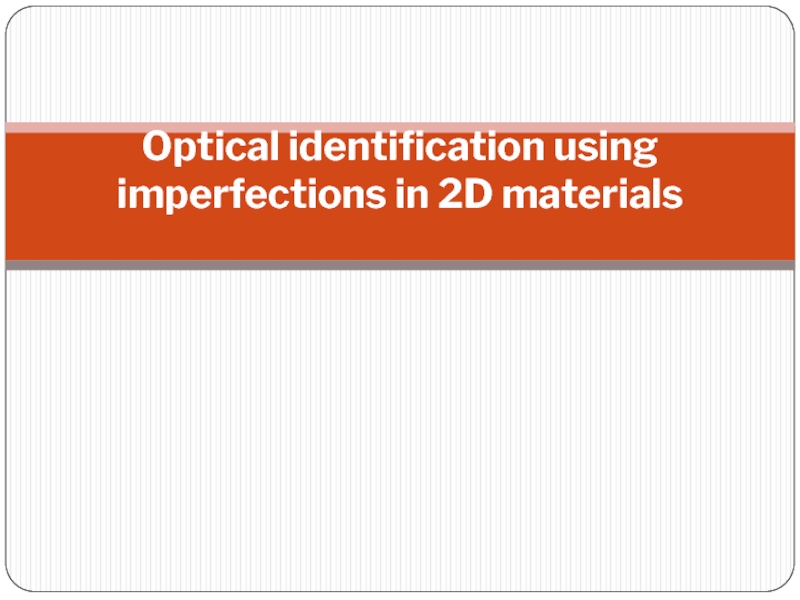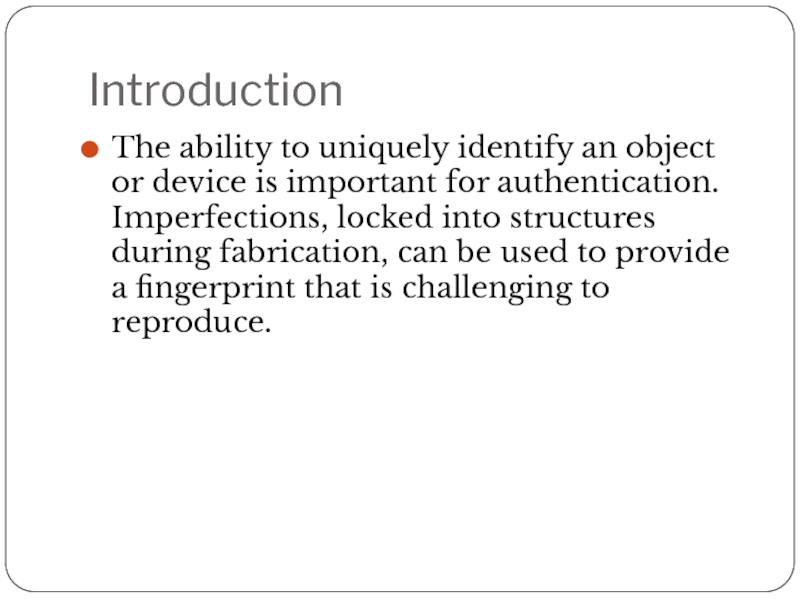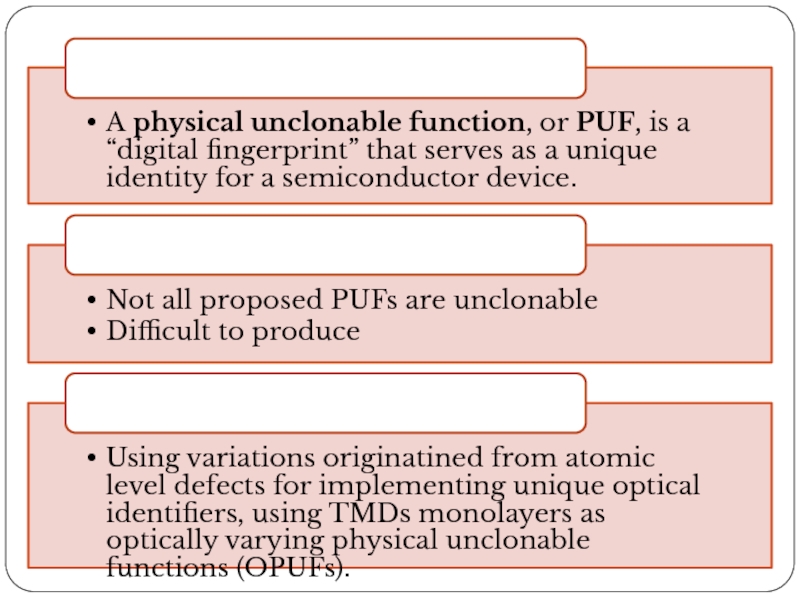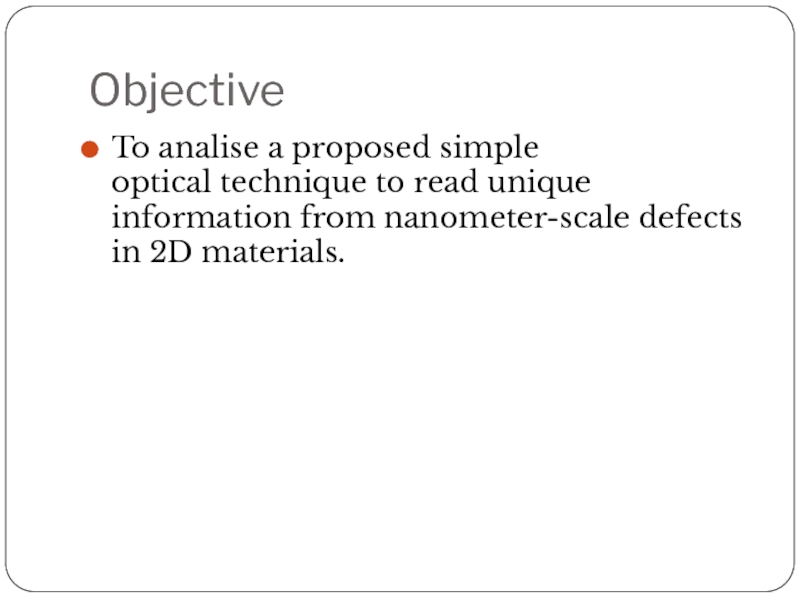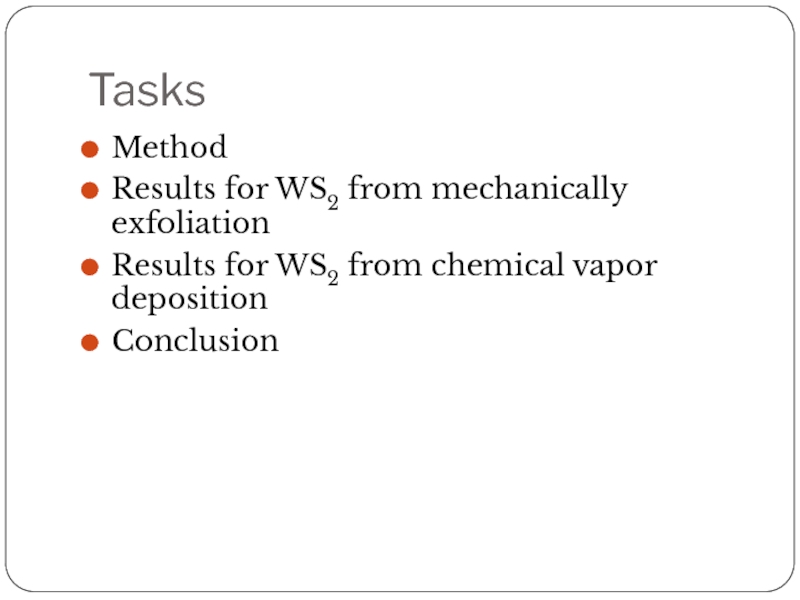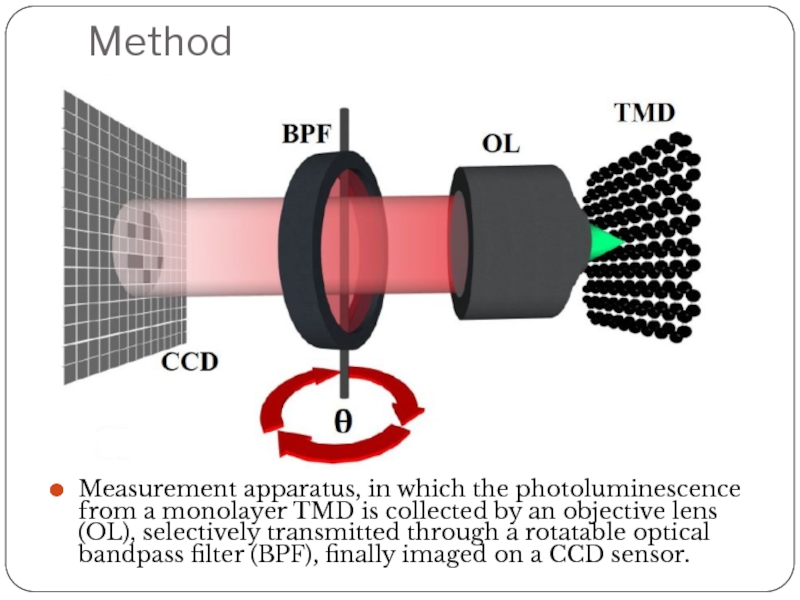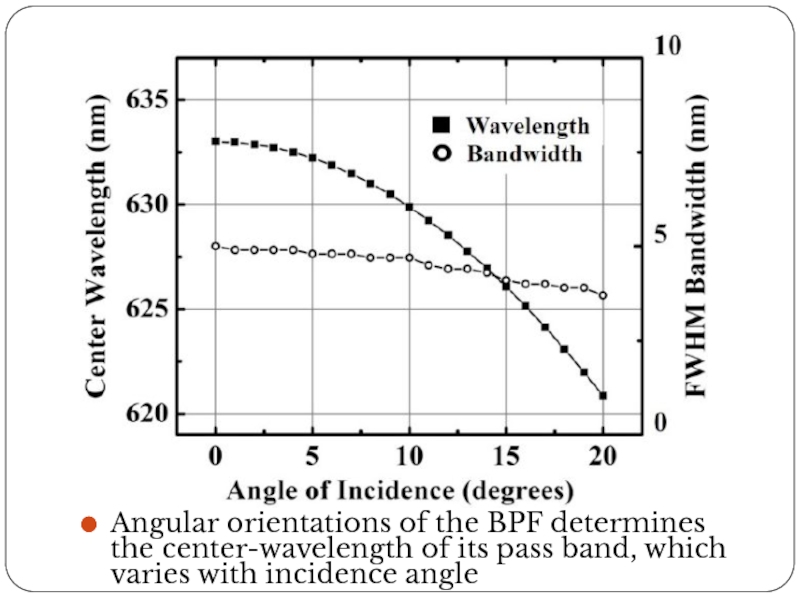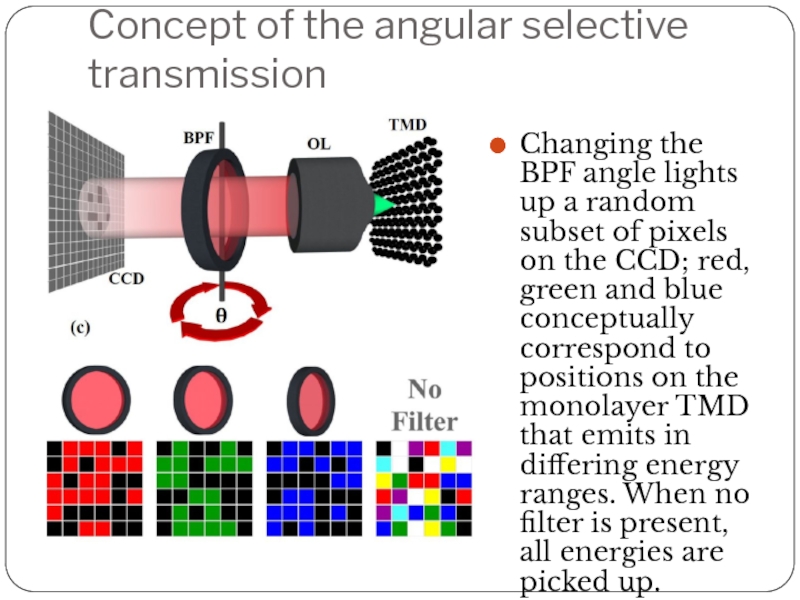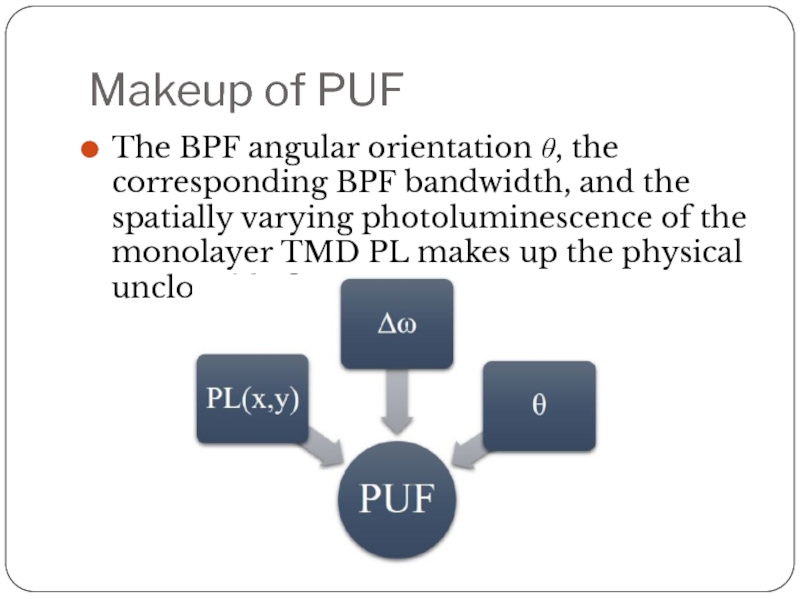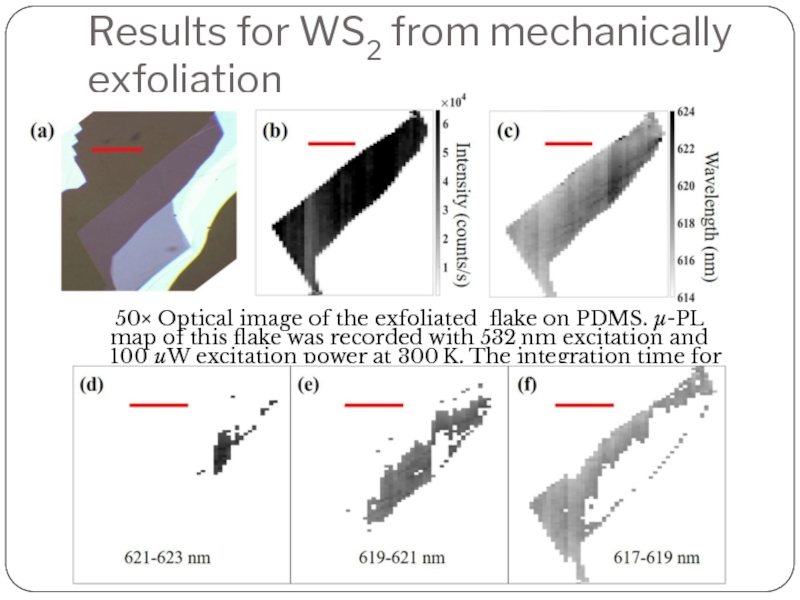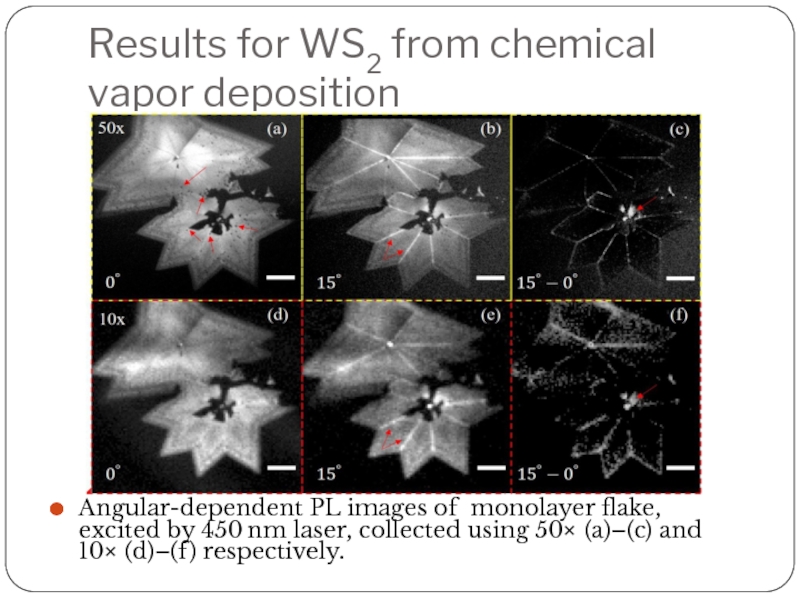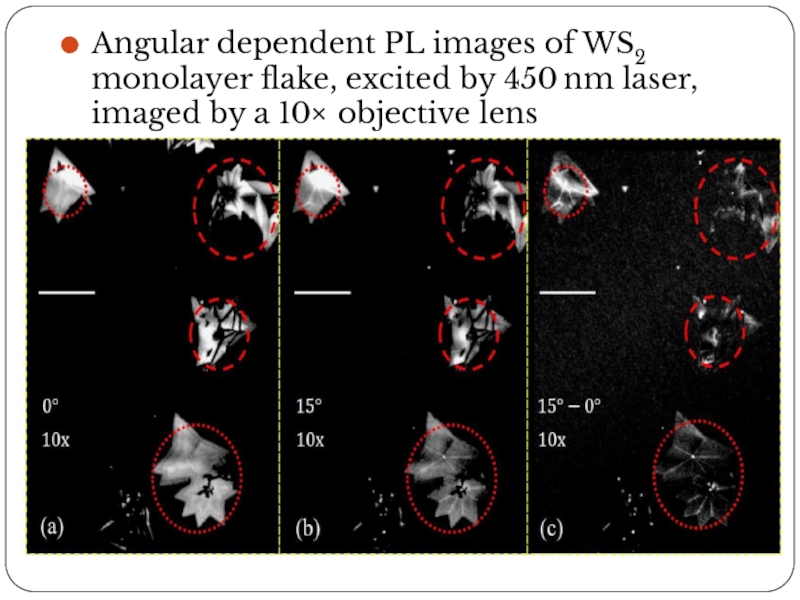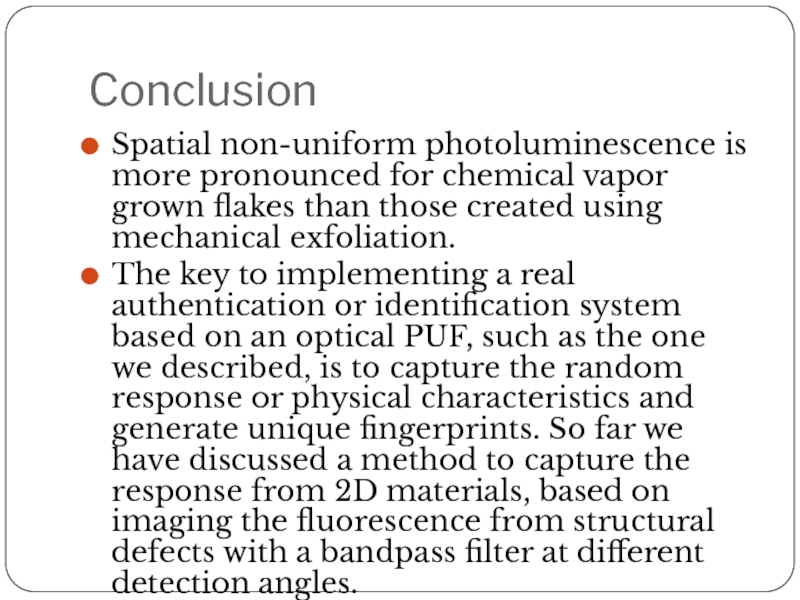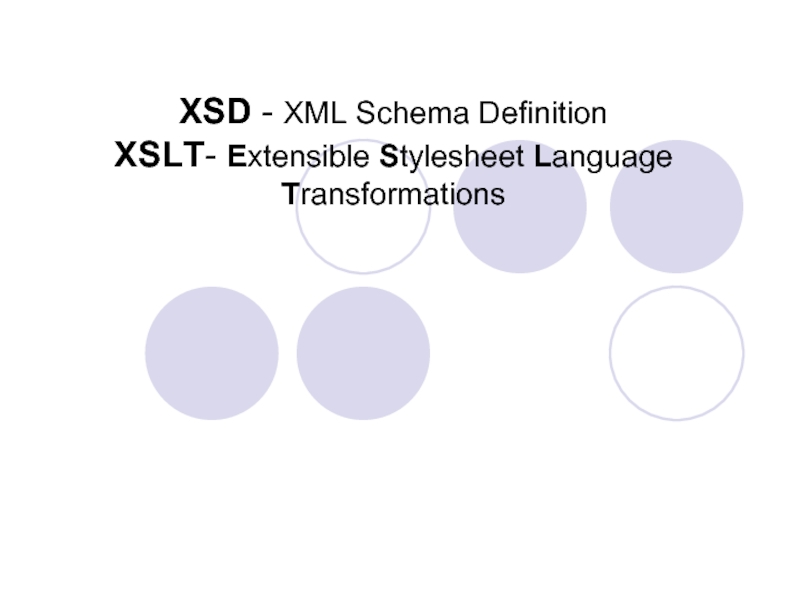- Главная
- Разное
- Дизайн
- Бизнес и предпринимательство
- Аналитика
- Образование
- Развлечения
- Красота и здоровье
- Финансы
- Государство
- Путешествия
- Спорт
- Недвижимость
- Армия
- Графика
- Культурология
- Еда и кулинария
- Лингвистика
- Английский язык
- Астрономия
- Алгебра
- Биология
- География
- Детские презентации
- Информатика
- История
- Литература
- Маркетинг
- Математика
- Медицина
- Менеджмент
- Музыка
- МХК
- Немецкий язык
- ОБЖ
- Обществознание
- Окружающий мир
- Педагогика
- Русский язык
- Технология
- Физика
- Философия
- Химия
- Шаблоны, картинки для презентаций
- Экология
- Экономика
- Юриспруденция
Optical identification using imperfections in 2D materials презентация
Содержание
- 1. Optical identification using imperfections in 2D materials
- 2. Introduction The ability to uniquely identify an
- 3.
- 4. Objective To analise a proposed simple optical technique
- 5. Tasks Method Results for WS2 from mechanically
- 6. Method Measurement apparatus, in which the photoluminescence
- 7. Angular orientations of the BPF determines the
- 8. Concept of the angular selective transmission Changing
- 9. Makeup of PUF The BPF angular orientation θ,
- 10. Results for WS2 from mechanically exfoliation
- 11. Results for WS2 from chemical vapor deposition
- 12. Angular dependent PL images of WS2 monolayer
- 13. Conclusion Spatial non-uniform photoluminescence is more pronounced
Слайд 2Introduction
The ability to uniquely identify an object or device is important
for authentication. Imperfections, locked into structures during fabrication, can be used to provide a fingerprint that is challenging to reproduce.
Слайд 4Objective
To analise a proposed simple optical technique to read unique information from
nanometer-scale defects in 2D materials.
Слайд 5Tasks
Method
Results for WS2 from mechanically exfoliation
Results for WS2 from chemical vapor
deposition
Conclusion
Conclusion
Слайд 6Method
Measurement apparatus, in which the photoluminescence from a monolayer TMD is
collected by an objective lens (OL), selectively transmitted through a rotatable optical bandpass filter (BPF), finally imaged on a CCD sensor.
Слайд 7Angular orientations of the BPF determines the center-wavelength of its pass
band, which varies with incidence angle
Слайд 8Concept of the angular selective transmission
Changing the BPF angle lights up
a random subset of pixels on the CCD; red, green and blue conceptually correspond to positions on the monolayer TMD that emits in differing energy ranges. When no filter is present, all energies are picked up.
Слайд 9Makeup of PUF
The BPF angular orientation θ, the corresponding BPF bandwidth, and
the spatially varying photoluminescence of the monolayer TMD PL makes up the physical unclonable function.
Слайд 10Results for WS2 from mechanically exfoliation
50× Optical image of
the exfoliated flake on PDMS. μ-PL map of this flake was recorded with 532 nm excitation and 100 μW excitation power at 300 K. The integration time for each pixel is 0.5 s.
Слайд 11Results for WS2 from chemical vapor deposition
Angular-dependent PL images of monolayer flake,
excited by 450 nm laser, collected using 50× (a)–(c) and 10× (d)–(f) respectively.
Слайд 12Angular dependent PL images of WS2 monolayer flake, excited by 450 nm
laser, imaged by a 10× objective lens
Слайд 13Conclusion
Spatial non-uniform photoluminescence is more pronounced for chemical vapor grown flakes
than those created using mechanical exfoliation.
The key to implementing a real authentication or identification system based on an optical PUF, such as the one we described, is to capture the random response or physical characteristics and generate unique fingerprints. So far we have discussed a method to capture the response from 2D materials, based on imaging the fluorescence from structural defects with a bandpass filter at different detection angles.
The key to implementing a real authentication or identification system based on an optical PUF, such as the one we described, is to capture the random response or physical characteristics and generate unique fingerprints. So far we have discussed a method to capture the response from 2D materials, based on imaging the fluorescence from structural defects with a bandpass filter at different detection angles.
